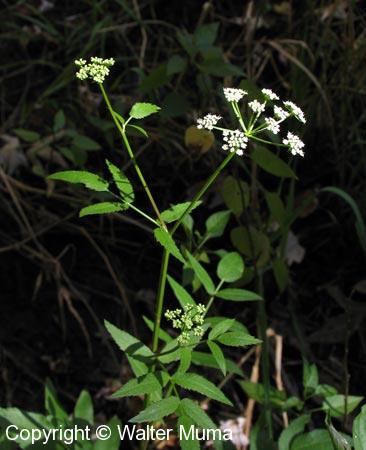
|
 |
Overall view of a flowering plant. |
|
 |
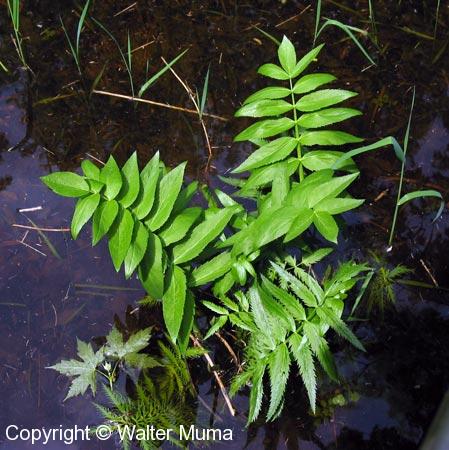
|
 |
Overall view of a non-flowering Water Parsnip. Note the once-compound leaves. Those of the deadly poisonous Water Hemlock (Cicuta maculata) are usually doubly-compound. |
|
 |
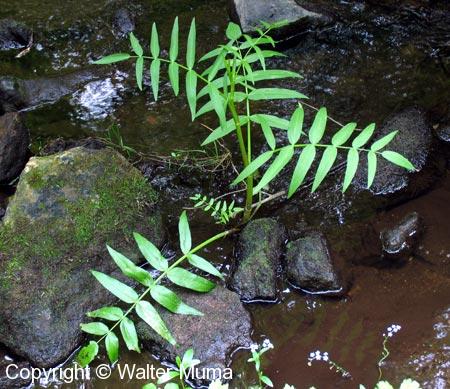
|
 |
A nice view of a whole plant, showing the leaves. |
|
 |
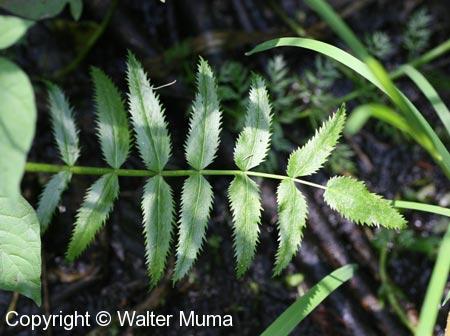
|
 |
The leaves that are nearest the water take on this form. |
|
 |
|
|
 |
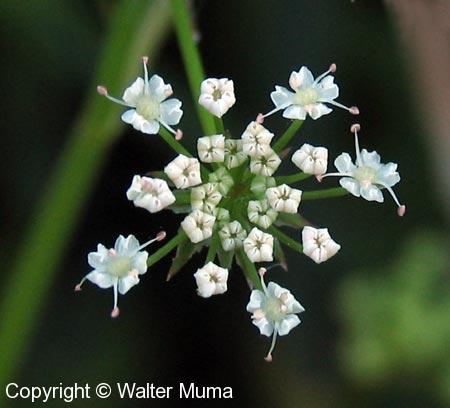
|
 |
Closeup view of some individual flowers, both open and those that are about to open. |
|
 |
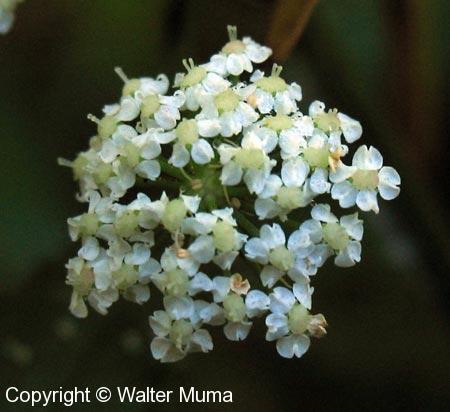
|
 |
Another closeup view, of a flower cluster that is farther along. |
|
 |
|
|
 |
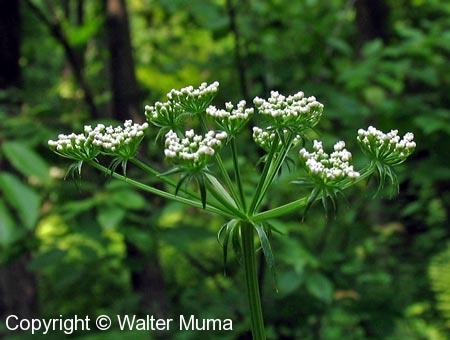
|
 |
Side view of flower umbel. |
|
 |
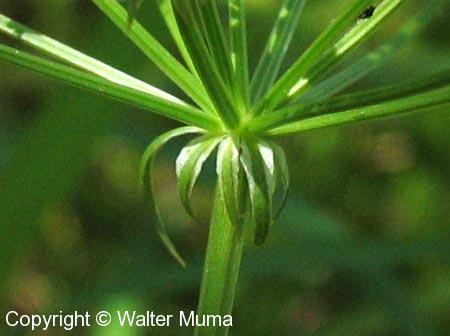
|
 |
Closeup of the base of the flower unbel. Note the bracts that curve downwards. |
|
 |
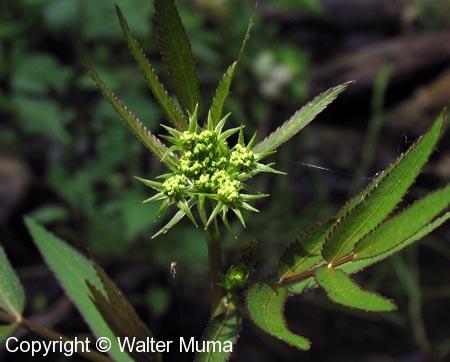
|
 |
Flower buds. |
|
 |
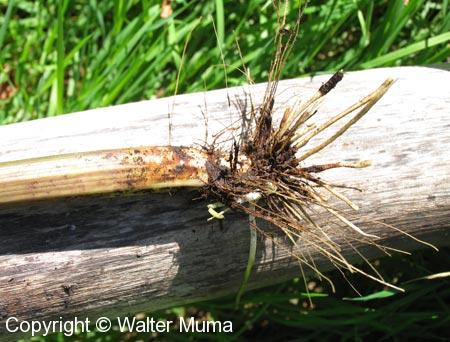
|
 |
Base of Water Parsnip and root. |
|
 |
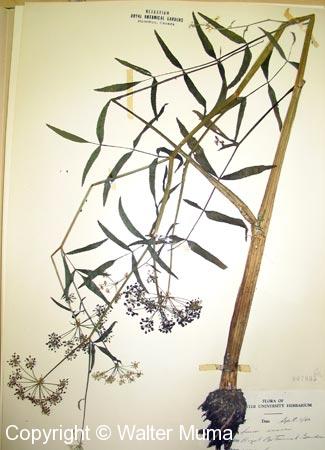
|
 |
Herbarium specimen showing entire plant, bent over.
(From the collection of the Royal Botanical Gardens Herbarium,Burlington,Ontario). |
|
 |
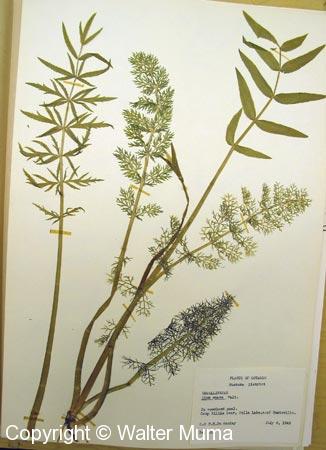
|
 |
This herbarium specimen shows the three types of leaves that are found on Water Parsnips. The very fine feathery leaves are those that grow fully underwater. The partially feathery ones grow at the surface. And the "plain" leaves grow above the water's surface.
(From the collection of the Royal Botanical Gardens Herbarium,Burlington,Ontario). |
|
 |
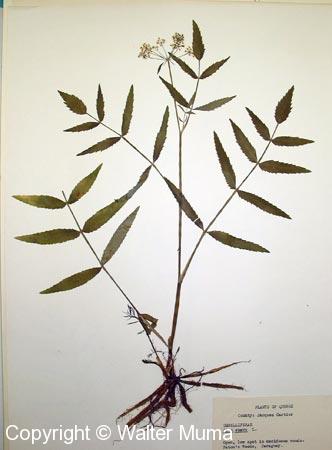
|
 |
Herbarium specimen showing the entire Water Parsnip plant.
(From the collection of the Royal Botanical Gardens Herbarium,Burlington,Ontario). |
|
 |
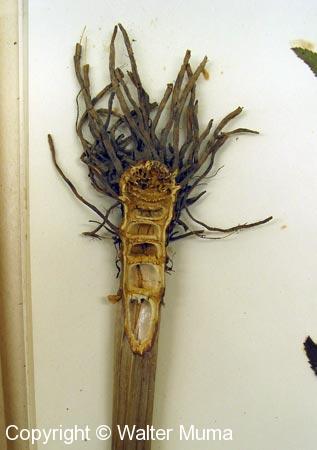
|
 |
Herbarium specimen showing the chambered root stalk.
(From the collection of the Royal Botanical Gardens Herbarium,Burlington,Ontario). |
|
 |
|
|  |
 |
|